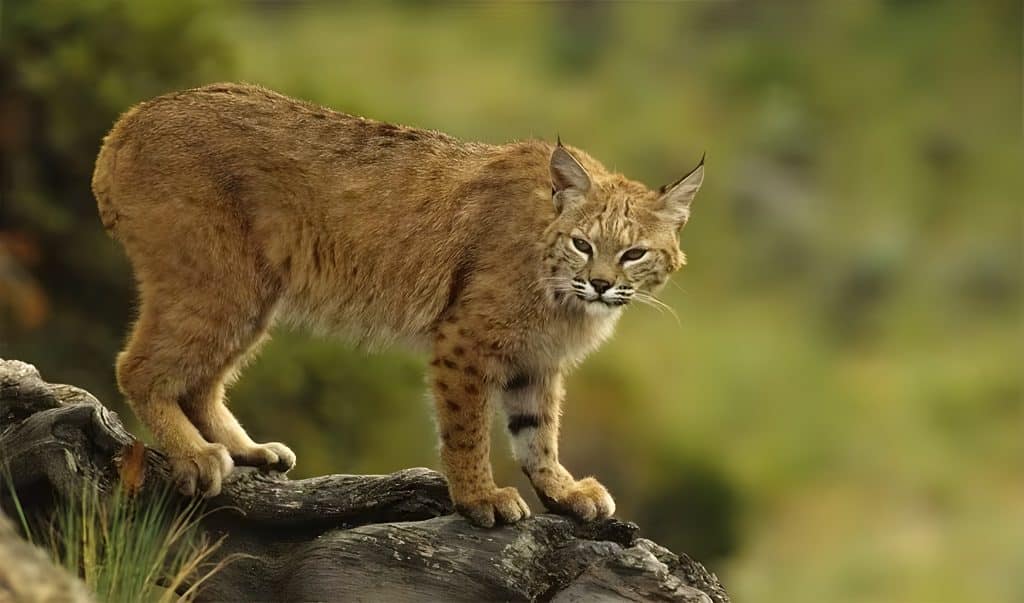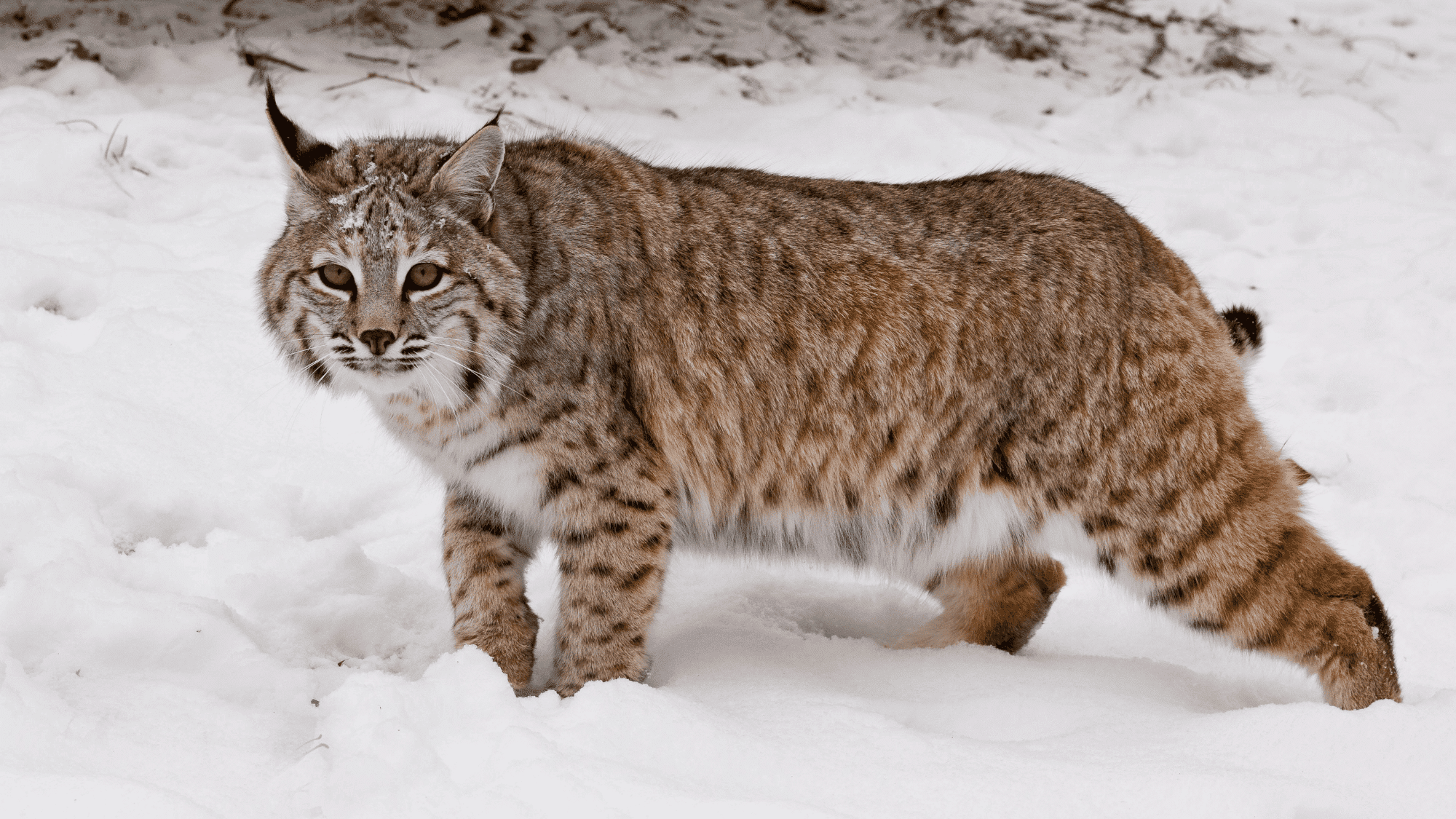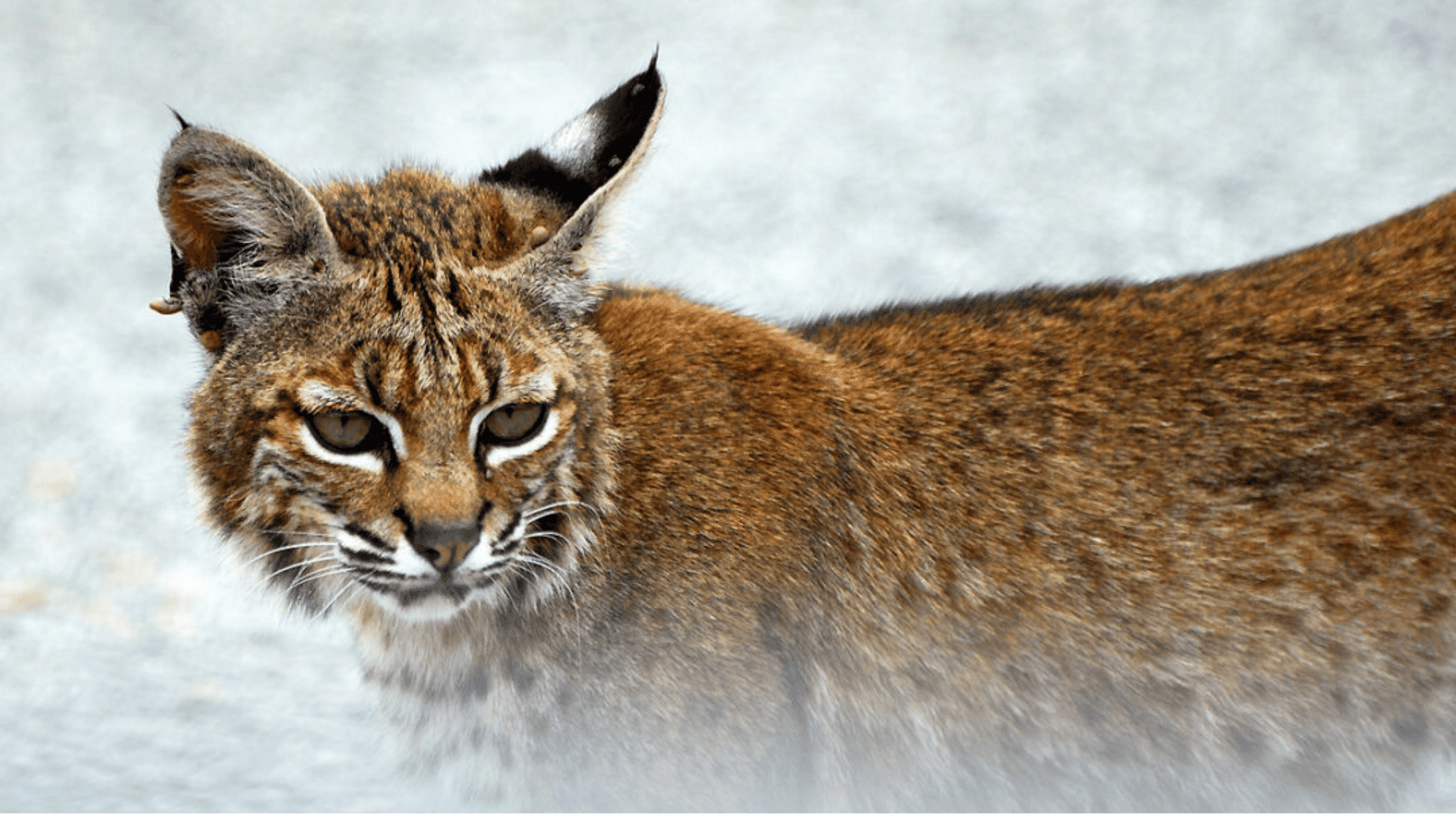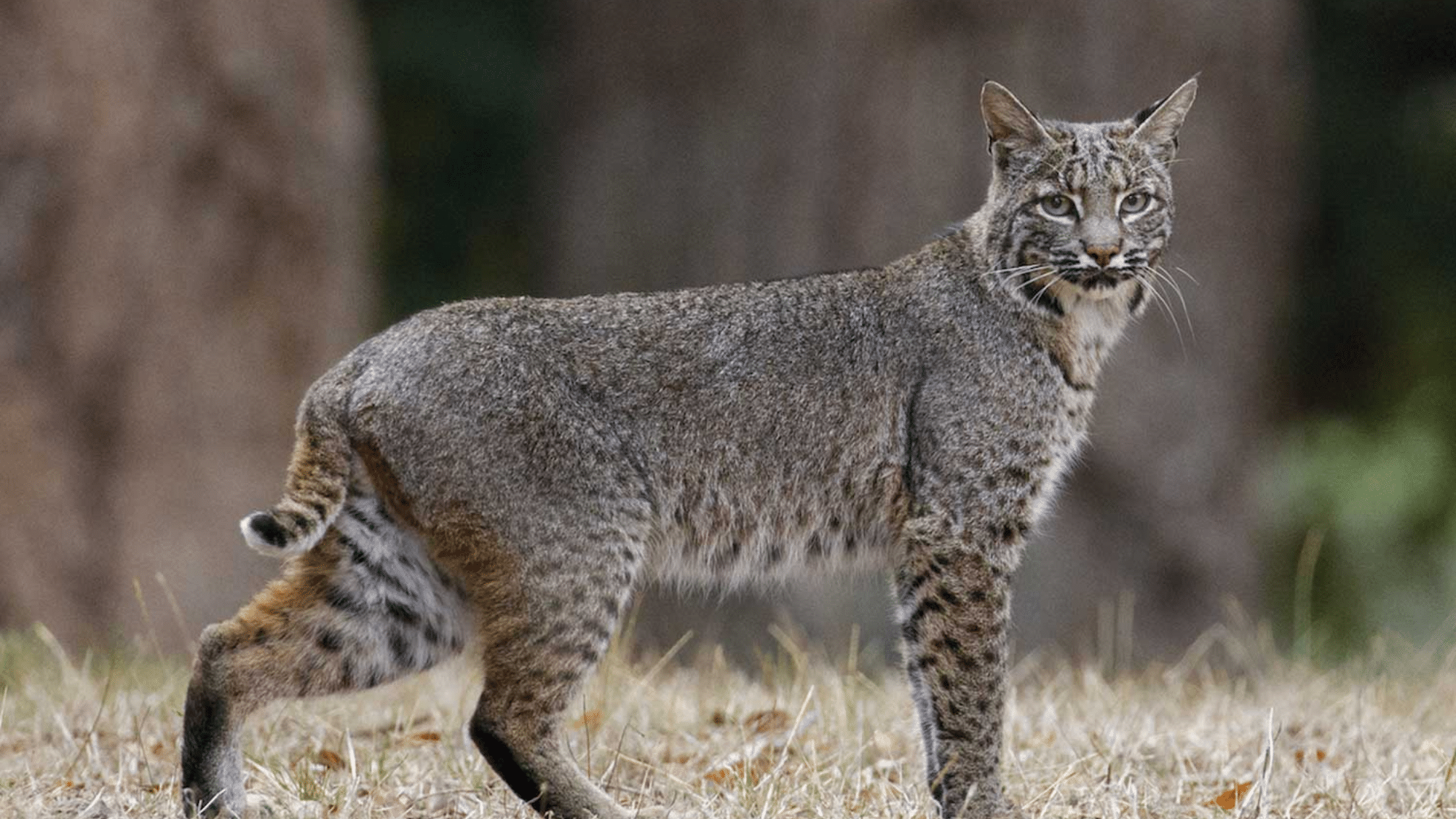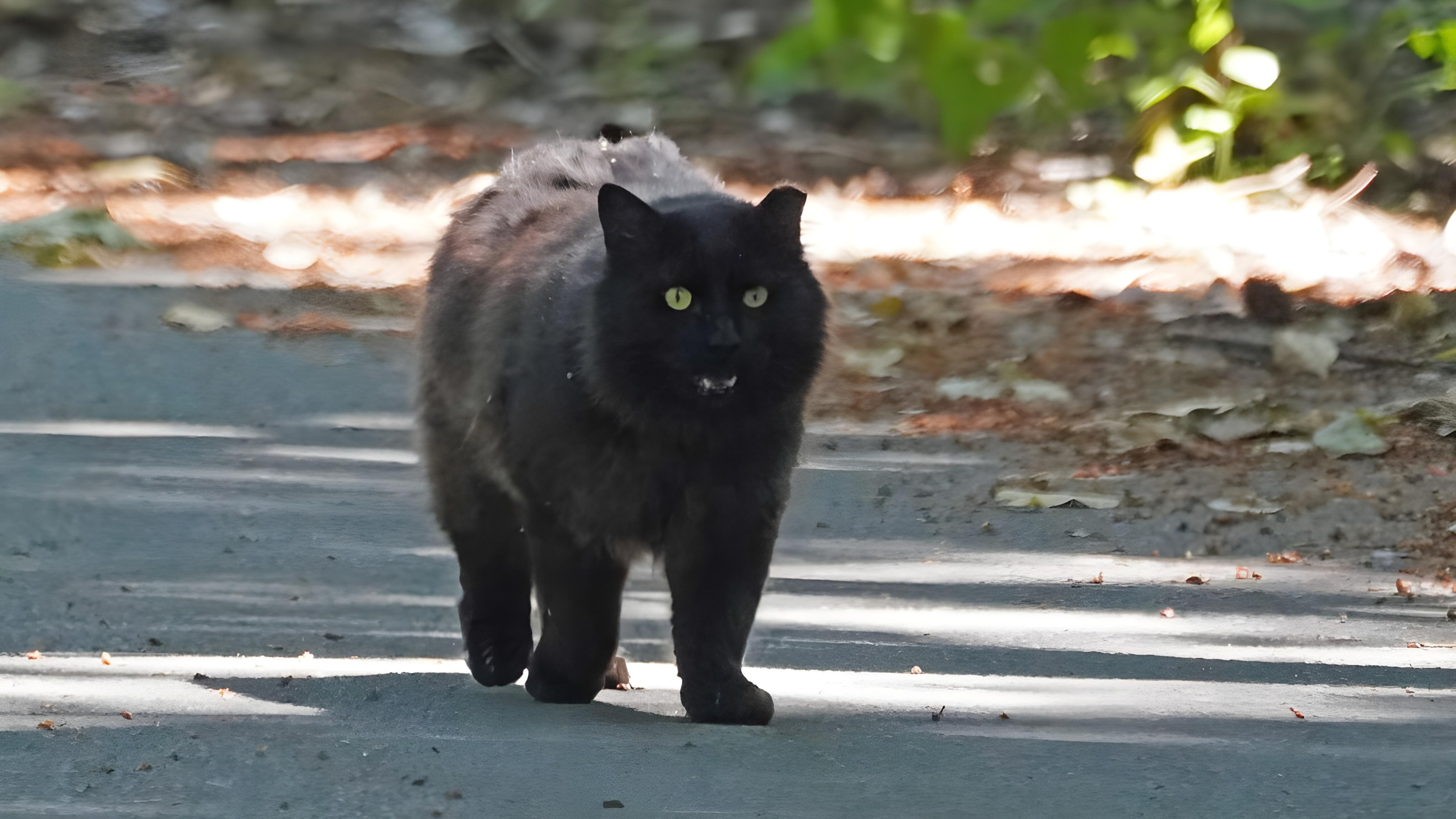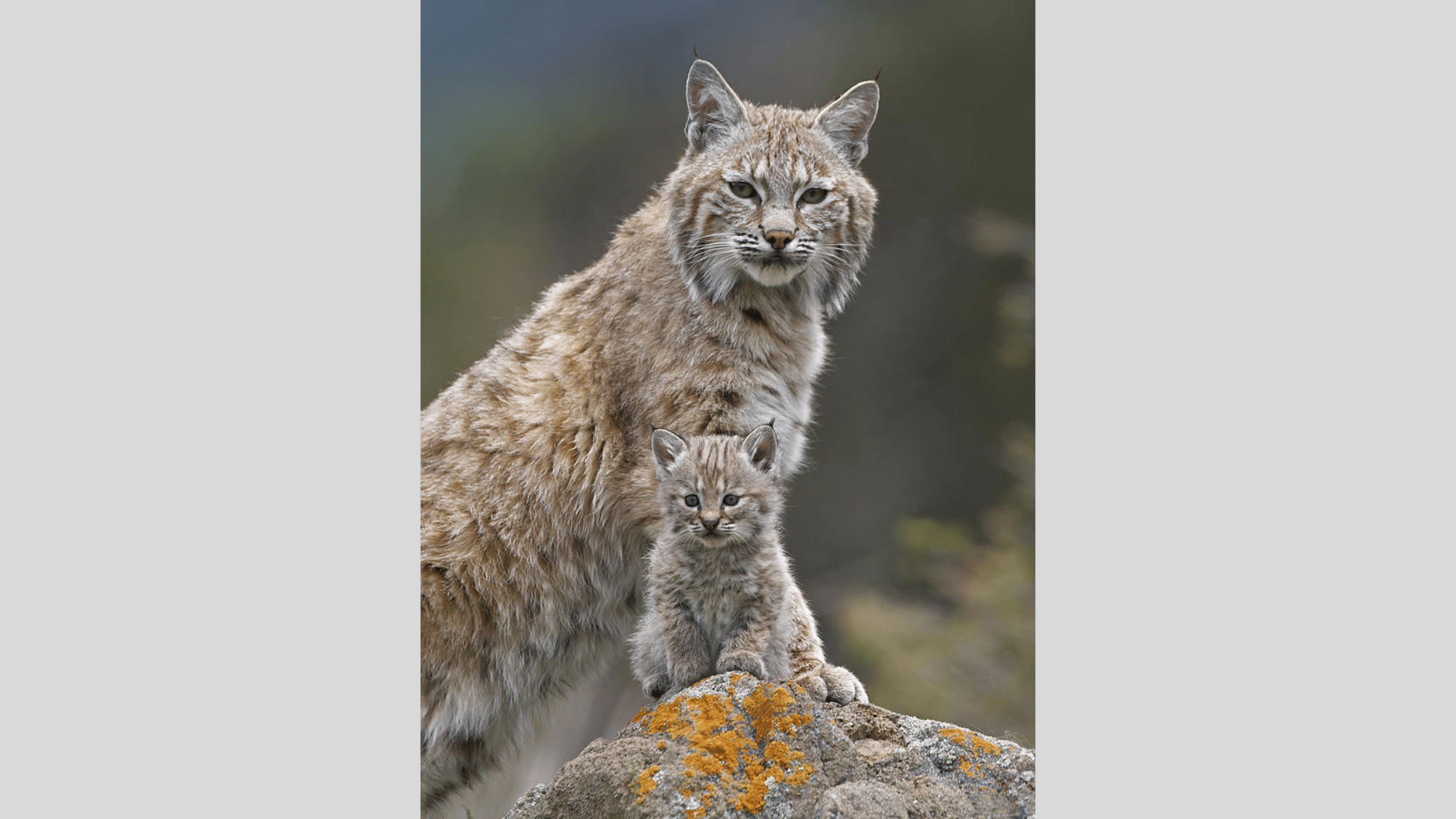The brown bobcat is one of America’s most adaptable medium-sized predators. These solitary felines play a crucial role in maintaining ecological balance in various environments throughout the continent.
Found in vast habitats from southern Canada to central Mexico, brown bobcats have shown an amazing ability to live in proximity to human settlements while remaining largely unseen.
Even though brown bobcats live in many places, there’s still a lot we don’t know about how they behave.
So, let’s take a closer look at what makes them so special.
Physical Characteristics of Bobcats
Bobcats possess distinct features that help them adapt to their environments, enabling them to thrive as skilled hunters.
- Adult males typically weigh 18-35 pounds, while females are smaller at 15-25 pounds
- Body length ranges from 25-50 inches, including the tail
- Distinctive short “bobbed” tail measures 4-7 inches with a black tip on the top side
- Coat color varies from light gray to reddish-brown with black spots or streaks
- Pointed ears feature prominent black tufts and white patches on the backs
- Facial ruff extends from the cheeks to the jaw, and is more prominent in males
- Large paws with retractable claws and four toes show asymmetrical track patterns
- Yellow or amber eyes with black pupils that expand in low light conditions
- Muscular build with longer back legs for excellent jumping capability
- Adult males have broader heads and more muscular necks than females
Color Variations in Bobcats
Bobcats have various coat variations that help them adapt to different environments, providing them with camouflage and protection.
The most commonly spotted bobcats’ colours are listed below:
1. Brown
Brown bobcats display medium to dark base coats with unique black spotting. They dominate woodlands across North America, where their coloration matches forest floors.
Winter coats develop richer brown tones than summer pelage. However, this seasonal adaptation helps maintain effective camouflage as woodland environments change throughout the year.
2. Red
Red bobcats have rusty or cinnamon tones throughout their coats. They live in southern regions where reddish soil and rock formations create natural camouflage.
Their spotting patterns appear less prominent against the warm background color. On red variants, facial markings often stand out with greater contrast.
3. Gray
Gray bobcats feature ashy or silver-gray base fur with bold black markings. Most gray-colored populations live in northern forests and rocky highlands.
Summer coats lighten significantly while winter pelage darkens. Older individuals often develop frosted areas along their backs and facial regions.
4. Black
Black bobcats represent rare genetic variants found occasionally throughout North America. Their almost solid coloration results from melanistic traits.
Dark coloration benefits nighttime hunting, while daylight may present challenges. Spot patterns remain visible in direct sunlight as slightly darker markings.
Climatic Preferences
| Aspect | Details |
|---|---|
| Preferred Environments | Rocky outcrops, forests, scrublands, desert edges, swamps |
| Territory Size | Males: 10-60 square miles; Females: 5-20 square miles |
| Shelter Types | Rock crevices, hollow logs, dense brush, abandoned structures |
| Territorial Markers | Scat piles, urine spraying, claw marks on trees |
| Human Proximity Tolerance | Can exist near suburban areas with sufficient green corridors |
| Seasonal Movement | Minimal migration may shift core areas based on prey availability |
| Density in Optimal Habitat | 1-2 adults per square mile in prime conditions |
| Water Requirements | Obtains most moisture from prey; drinks from sources when available |
| Den Selection Criteria | Protected from elements, predators, and disturbance |
Reproduction and Life Cycle of These Cats
Bobcats mate from February to March. Females are fertile 5-10 days during estrus. After 60-70 days of pregnancy, they give birth. Litters contain 1-6 kittens, typically 2-3.
Newborns weigh 10-12 ounces, born blind. Eyes open around day 10.
Kittens start eating solid food at 1-2 months. Mothers teach hunting at 3 months.
Young leave home at 8-11 months. Sexual maturity comes at 1-2 years. Wild bobcats live 7-10 years. Some reach 32 years in captivity.
Only 50% of wild kittens survive their first year due to starvation, disease, and predator conflicts.
Research and Tracking Methods
Various research and tracking techniques enable wildlife experts to study bobcats’ behaviour, movement, and ecology in their natural habitats.
- GPS collars provide detailed movement data across seasons and habitats
- Camera traps capture behaviour patterns without human disturbance
- DNA analysis from scat and hair samples reveals population genetics
- Stable isotope testing of tissue indicates dietary preferences
- Radio telemetry allows cost-effective monitoring of multiple individuals
- Satellite tracking documents long-distance movements and dispersal
For a more detailed tracking and catching guide, you can refer to this article: A Complete Guide on How to Catch a Bobcat.
Conclusion
The brown bobcat stands out not just for its looks, but for how well it fits into so many different places.
From rocky deserts to thick forests, this wild cat knows how to stay hidden, hunt smart, and live near people without being noticed.
What truly makes the brown bobcat special is its balance of power and stealth.
Last but not least, by learning more about the brown bobcat, you can see how smart this animal is and how well nature has shaped it to survive, even though it’s hard to spot.
Frequently Asked Questions
Are Bobcats Dangerous to Humans?
Bobcats rarely attack humans. They naturally avoid people and typically flee when they notice human presence. Attacks are extremely rare.
Are Bobcats at Risk or Threatened?
Bobcats are currently listed as Least Concern on the IUCN Red List. Their populations are stable across most of their range.
Is It Legal to Hunt Bobcats?
Regulations vary by state and region. Many areas permit bobcat hunting with proper licenses and during specific seasons.
When are Bobcats Most Active?
Bobcats are primarily crepuscular (active at dawn and dusk) and nocturnal, but they can also be active during daylight hours.

